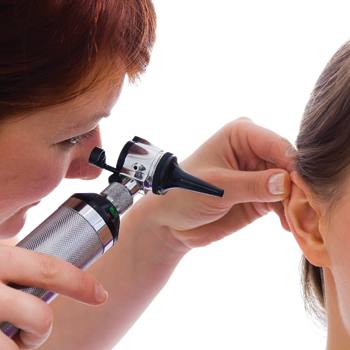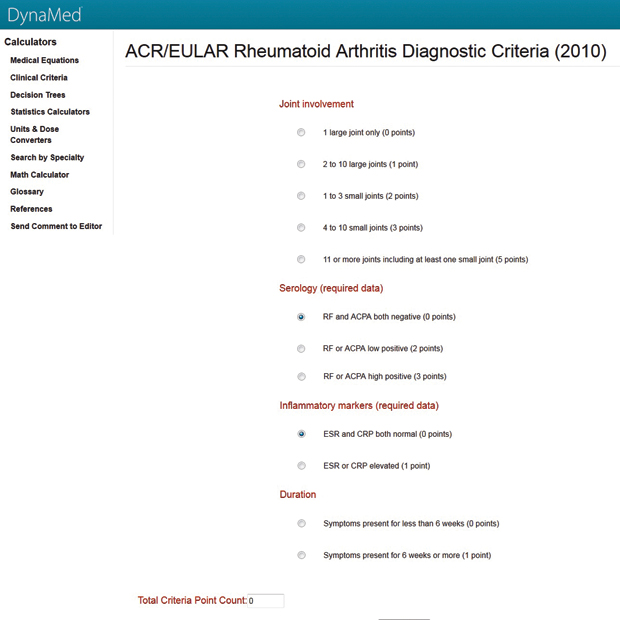Managing ENT problems in primary care
The most common ear, nose, and throat conditions of sinusitis, hearing loss, vertigo, and tinnitus can be evaluated and treated in the primary care office, but the internist must take care to work through the wide range of symptoms.
Many patients with conditions of the ear, nose, and throat report a range of multiple symptoms and hope their internist can prescribe a remedy that will alleviate their misery and make them feel better quickly.
The most common ENT conditions of sinusitis, hearing loss, vertigo, and tinnitus can be evaluated and treated in the primary care office, but signs of an acute or severe condition should prompt a referral to a subspecialist, experts agreed.
Sinusitis
More than 29 million U.S. adults, about 12.1% of the adult population, were diagnosed with sinusitis in 2015, according to the CDC. Determining the cause of sinus symptoms—whether viral, bacterial, or allergic—can be difficult, given the similarity of symptoms, said Howard Libman, MD, FACP, professor of medicine, emeritus, at Harvard Medical School in Boston. Facial pressure and frontal headaches, altered smell sensation, nasal congestion, or postnasal drip is common with all three causes.

“We try to distinguish between the three main causes by considering the presence or absence of other symptoms. The physician should run through the list of symptoms and examine the patient, although the examination may not be helpful, and then try to come up with the most likely diagnosis and treat the patient empirically for that condition. … You are never 100% sure, but you can be moderately confident based on the way that the patient presents,” Dr. Libman said.
Bacterial sinusitis tends to be unilateral with localized tenderness and purulent mucus, is often accompanied by fever and frontal headache, persists longer than 10 days, can include maxillary toothache, and may present as worsening upper respiratory symptoms after initial improvement, Dr. Libman said. Viral and allergic sinusitis are similar, although viral may be accompanied by low-grade fever and a sore throat and will usually improve within seven to 10 days. Allergic sinusitis is often chronic or recurrent, without fever, but with a raspy throat, lots of sneezing, and itchy eyes, he said.
Dr. Libman noted that a small percentage of patients with sinus symptoms have bacterial infection—one out of 10 cases, according to the CDC—but many patients come in presuming they need an antibiotic.
Much of outpatient medicine involves trying to give the patient some sense of what the diagnosis is and then setting a reasonable expectation about how long it will take to feel better, Dr. Libman said. One way to do that is to explain that most patients with an allergic or viral sinusitis get better over a certain number of days and that an antibiotic will not change that length of time. Trying to manage the patient's expectations is a sounder course of action than sending the patient home with a prescription that will do no good, he said.
Gurston Nyquist, MD, associate professor of otolaryngology and neurological surgery at Thomas Jefferson University in Philadelphia, said that symptoms of viral sinusitis can be relieved with a topical or systemic decongestant, an analgesic such as acetaminophen or ibuprofen, a topical intranasal steroid, and a saline rinse. Most of these infections will resolve on their own with conservative management after seven to 14 days, but signs of a more severe sinus infection, such as orbital cellulitis or severe headache suggesting an intracranial infection, should prompt an urgent referral, Dr. Nyquist said. A referral is also needed if the patient is immunocompromised due to poorly controlled diabetes, use of immunosuppressive medications, or treatment with chemotherapy, he said.
Amoxicillin is first-line therapy for acute bacterial sinusitis, and patients should be followed closely if they do not improve after the first seven days of treatment. At that point, patients should be reassessed for presence of other conditions or complications and another antibiotic should be considered, Dr. Nyquist said.
Presence of a unilateral symptom should be evaluated. If the symptoms do not improve with a trial of medical therapy, referral is indicated to rule out a nasal mass or polyp. Alternatively, the physician could consider further evaluation with a CT scan of the sinus, he said. Surgery is sometimes indicated for a patient who has had sinusitis for three or more months despite medical therapy or if the patient has nasal polyps unresponsive to medical therapy. A spread of infection to the orbit or the brain is a more urgent reason for sinus surgery. Nasal obstruction caused by a deviated septum or turbinate hypertrophy despite medical therapy may indicate need for surgery, Dr. Nyquist said.
Hearing loss
Gradual hearing loss is often first evaluated by the internist, and the initial workup should include taking a patient history, checking for cerumen obstruction, visualizing at the ear drum to make sure it is normal, and evaluating gross hearing capability in the office. “If all of this evaluation is nondiagnostic, the patient should be referred for audiologic testing and probably an ENT evaluation. Occasionally patients who come in with subjective hearing loss have normal audiologic testing,” Dr. Libman said.
In the initial workup of sudden hearing loss, a patient history should include questions about any history of trauma, external ear and canal pain, ear drainage, fever, or other symptoms, according to the American Academy of Otolaryngology-Head and Neck Surgery guidelines on sudden hearing loss. “Looking in the ears is key before referring the patient,” said Seth R. Schwartz, MD, MPH, an otolaryngologist/neurotologist at Virginia Mason Medical Center in Seattle. “It is not uncommon for us to get referrals from internists who have not looked in the patient's ears before referring.”
It is also important to differentiate whether the problem is a conductive hearing loss caused by cerumen, an ear infection, or an anatomical problem, or a sensorineural hearing loss due to damage to the cochlea, the auditory nerve, or other aspects of central auditory perception or processing. New sensorineural hearing loss occurs over a 72-hour period in one or both ears, has a narrow treatment window, and requires a referral to an ENT subspecialist, Dr. Schwartz said.
Vertigo
For most patients with vertigo, symptoms are isolated and short-lived, and no management is needed, Dr. Schwartz said. If the vertigo is accompanied by light-headedness when the patient stands, the internist should rule out a cardiovascular cause, such as hypotension, and then initiate management of that condition. If the vertigo is relatively severe and doesn't resolve within a week or two, a referral should be made. Also, a referral is indicated if patients who regain their balance do not quite revert back to normal within a few months.
“The only ones you should be urgently worried about are people who have other neurologic symptoms, because your concern should then be about stroke,” Dr. Schwartz added.
Causes of vertigo that may be related to the ear include positional vertigo, Ménière's disease, and vestibular neuritis or labyrinthitis, Dr. Nyquist said. Sometimes, these can be determined based on patient history and the length of time that the patient has experienced the dizziness. The Dix-Hallpike test and cranial nerve examination are imperative as part of the workup. If the patient is presenting with dizziness associated with hearing loss, vertigo, and tinnitus, the diagnosis could be Ménière's disease, which should prompt referral for a hearing test and ENT evaluation.
Dizziness of about 10 to 15 seconds that is associated with head position or rolling over in bed can be evaluated with a Dix-Hallpike maneuver in the office, with vestibular exercise with an Epley maneuver provided to the patient. Meclizine is often prescribed, but there is no formal recommendation for this treatment of vertigo, Dr. Nyquist said.
Tinnitus
Tinnitus is rarely worrisome, Dr. Schwartz said. Bilateral tinnitus is the most common, with one in 10 people reporting the condition. Patients will describe the condition as being in their head, whereas people with unilateral tinnitus will report a buzzing in one ear. Patients with new-onset unilateral tinnitus that persists for six months or longer should be referred for further evaluation by an ENT subspecialist. All patients with tinnitus should be evaluated for hearing loss, as a hearing aid can be helpful if needed, Dr. Schwartz said. He noted that no surgical procedure or medication is helpful for tinnitus.
“Tinnitus is a tough one because it is very common as patients get older,” Dr. Libman said. It is not often treatable, but there are ways of coping with it, such as using a white noise machine to mask the sound so people can get to sleep, he said.
New onset of pulsatile tinnitus, an ear noise that seems as though it is beating along with the person's heartbeat, should prompt concern if it persists, Dr. Schwartz noted. This type of tinnitus can indicate a vascular problem in the neck, which can occasionally lead to an aneurysm or resection, and can be the initial presentation of a skull-based tumor. Depending on the underlying cause of pulsatile tinnitus, the condition can sometimes be resolved by surgery, but only in a minority of patients, he said.
An internist may or may not be able to prescribe a remedy that will alleviate misery from every possible symptom, but for most patients, ENT conditions are treatable, Dr. Nyquist said. The internist, however, “should be on the lookout for any serious, acute conditions that may require more urgent medical attention and possible referral to a subspecialist.”




